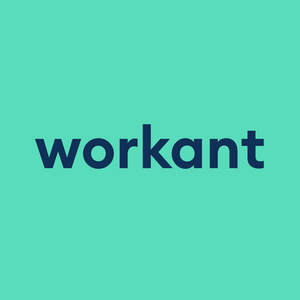Employee development, also referred to as talent development, is the practice of helping employees gain or expand upon skills, competencies, and abilities. It’s the process of educating and developing workers, eventually making them more valuable to an organization, more engaged and satisfied, and more likely to become top performers and/or company leaders in the future. In this post, we will outline tips and strategies for enhancing the performance of your workforce through development.
Employee development vs. Employee training
Employee development is closely related to employee training, and the two HR aspects are often grouped under a single umbrella (training & development). Both focus on optimizing future employee (and, in turn, company-wide) performance and outcomes by attempting to teach, cultivate, and instill skills characterized as important for business success. But the two fields aren’t the same.
Development is long-term, focuses on deeper concepts and an employee’s overall career, and aims to prepare employees for future roles. On the other hand, training is done more quickly, serves the purpose of completing tasks for a newly acquired or current role, and is usually focused on teaching technical skills or specific processes for a particular job.
Fostering employee development: Essentially eminent
“Nothing we do is more important than hiring and developing people. At the end of the day, you bet on people, not strategies.”
– Lawrence Bossidy, Author and former CEO of AlliedSignal
A seemingly infinite array of both unforeseen challenges to development and unprecedented opportunities (link to future of work post) within the world of HR have continuously emerged throughout recent years, opening up doors that didn’t exist before while simultaneously revealing new threats to business success.
The entire HR field must continue to plug away amidst the Great Resignation, the growing skills gap, the “Fourth Industrial Revolution,” and widespread changes in worker expectations leading to demands for massive upheavals within HR practices.
It’s likely that with the rise of digitization and automation, tedious manual labor roles will be phased out as jobs requiring creativity, innovative thinking, and conceptual talents will be more in demand. Employee development programs will be even more essential as the skills gap expands.
PwC’s “23rd Annual Global CEO” survey shows that 75% of all respondents classify “finding the right skills” in workers as a threat to their businesses. According to the World Economic Forum’s “Future of Jobs” report, companies project that 40% of workers will require up to half a year of reskilling activities by 2024.
As SMB owners, CEOs, entrepreneurs, and HR leaders, these conditions and aspects of our reality push us to prioritize development more heavily. Let’s move on and point to the power of employee development.
The benefits of cultivating employee development programs
By focusing closely and intelligently on employee development, you can:
- Increase employee engagement & wellbeing (link to wellbeing post): A Gallup poll reminds us that employee engagement and wellbeing levels are now stagnant (likely as a result of the pandemic), in contrast with the steady rise throughout the past decade and overall employee wellbeing is a crucial element influencing worker performance, output, and results.
- Enhance employee wellbeing, talent levels, and productivity, improving overall business outcomes.
- Attract higher-level talent.
- Help your employees reach new heights, making them more likely to recommend or represent your organization and more likely to stay with your organization for longer.
- Better identify the correct candidates for certain roles, allowing you to use resources wisely, optimize leadership performance, and decrease turnover.
- Adapt more quickly than your competitors to the changing conditions while bridging the threatening skills gap.
- Cultivate a growth-oriented environment in the workplace, leading to employee motivation and a dynamic culture of progress.
- Get a positive ROI in a short time frame due to the increased output, profit, and revenues resulting from developmental investments. According to WEF, 66% of employers surveyed expect an ROI in upskilling & reskilling within one year of program implementation.
- Give your organization a better shot at future success through the cultivation of invaluable worker skills essential within the contemporary context
How can HR activities aid employee development?
The field of human resources is comprised of continuous activities related to employees—the human aspect of any business. Many HR subfields, activities, and approaches can assist with the creation and optimization of your development programs.
HR can be used to pinpoint and deeply understand goals, growth areas, glaring issues, patterns highlighting a variety of trends, and so much more. HR metrics and data can be utilized to track performance, output, and success. HR departments play an essential role within organizations by performing many functions; all focused on teams, employees, and people analytics.
All of these capacities and functions are helpful when creating or optimizing an employee development plan. HR can be used to:
- Conduct skills gap analyses and strategically create programs to develop certain capacities and improve the most needed soft and hard skills.
- Implement mentoring and coaching programs.
- Enhance performance management systems.
- Utilize all relevant aspects of HR analytics (link to original analytics post).
- Identify the nuanced differences between employees and provide knowledge assisting with the customization and personalization of programs.
- Develop diversity, equity, and inclusion (DEI) initiatives more successfully.
- Determine where development resources would be best spent.
- Implement incentives for employee development and consider enacting a gamification system.
- Put on strategically planned educational programs such as professional-education opportunities(i.e., technical, leadership, or career courses, general developmental opportunities (i.e., language classes or continuing-ed college classes), or one-off events (i.e., seminars or workshops).
HR is also necessary for evaluating the effectiveness of development initiatives once implemented, tracking employee development data, monitoring the results of development programs, and informing all future decisions related to employee development.
Strategies to use when optimizing HR for employee development
There are many amazing ways to enhance HR departments, teams, systems, and processes. But there are also many bad ways to optimize HR. Here are a few strategies to keep in mind while you’re developing the way you develop employees.
- Include short-term and long-term goals, initiatives, and programs.
- Use a holistic approach that incorporates and integrates a variety of HR activities.
- Pay close attention to HR analytics, metrics, and data while making any decision regarding employee development.
- Keep an eye on and lend a helping hand to organizational leaders (as many aspects of employee development fall into their hands).
- Invest in HR software to digitize and optimize various HR activities, streamline your HR processes, and give you more powerful HR analytics capabilities allowing for more significant insights.
- Build trust and keep employees happy by considering their autonomy when cultivating developmental programs (provide options and flexibility when possible).
- Customize, personalize, and tailor training and development plans whenever possible, as every employee is unique.
For assistance with optimizing your HR processes through the implementation of HR software, get started today by contacting Workant’s expert team for a one-on-one consultation.

